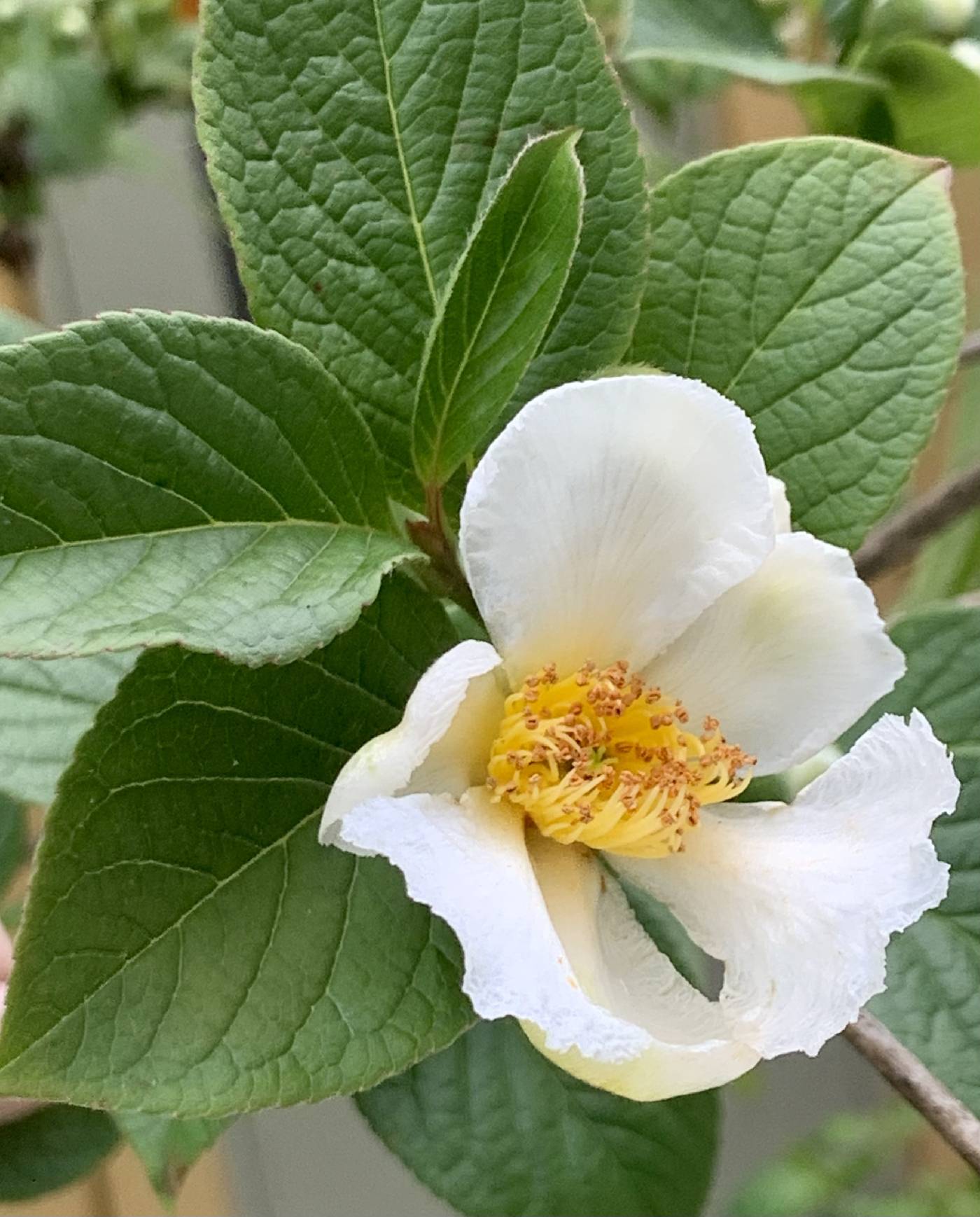Stewartia
|
Family: Theaceae |
Shrubs or trees, 3-6[-20] m. Stems usually 1; bark thin, closely fissured or exfoliating. Leaves deciduous [persistent]; petiole distinct from blade, winged; blade ovate to elliptic, chartaceous [coriaceous], base cuneate to attenuate or rounded, margins erose or serrulate, apex acute to acuminate, veins conspicuous, 5-8[-12] pairs, midrib elevated abaxially. Inflorescence bracts usually persistent, 1-2, immediately proximal to calyx. Pedicels terete, 0.2-0.7[-4] cm. Flowers [2-](5-)6-10(-12) cm diam.; sepals persistent, 5, connate proximally, concave, leaflike, thick and becoming lignified proximally, margins ciliate, apex acute, sericeous; petals 5(-8), connate proximally, white or creamy white, unequal, base pubescent and constricted, margins crenulate to erose, outermost petal slightly curved, abaxial surface silky or pubescent; stamens (50-)75-125(-150), connate basally; pistil (4-)5(-6)-carpellate; ovules 2-4 per locule; styles 1 or 5; stigmas [4-]5[-6]-lobed or unlobed. Capsules brown, conic, base rounded, apex acute, dehiscence loculicidal; columella absent. Seeds 2(-4), brown or reddish brown, angular, lenticular, or planoconvex, asymmetric, smooth, marginal wing present or absent. x = 15 (18). Both species of Stewartia in the flora area are uncommon; they are protected in most of the states in which they occur, but not federally. They overlap only in relatively small portions of their ranges: the Virginia Coastal Plain (unusual for S. ovata) and in Alabama. They usually occur at different elevations and habitats. Most species of Stewartia are distributed in Asia (China, Japan, Korea). The North American species are deciduous but are more closely related to the persistent-leaved Asian taxa than to the deciduous ones. The persistent-leaved taxa are sometimes treated under the genus Hartia, recognition of which is not supported by DNA sequence analyses (L. M. Prince 2002; Xiang Q. Y. et al. 2004).
Pet 5(6), white, barely connate at base, pubescent beneath; stamens numerous, the filaments united at base into a narrow ring adnate to the base of the corolla; ovary 5-locular; capsule woody, with 1-4 seeds per locule, splitting from the top down; sep persistent into fr; shrubs or trees with deciduous lvs and large white fls short-pediceled or subsessile in the axils. 6, the other 4 in e. Asia. Gleason, Henry A. & Cronquist, Arthur J. 1991. Manual of vascular plants of northeastern United States and adjacent Canada. lxxv + 910 pp. ©The New York Botanical Garden. All rights reserved. Used by permission. |

